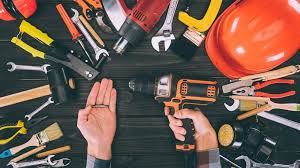7 Essential Tips You Didn’t Know Could Save Your Life!

Introduction
When it comes to construction and DIY projects, plywood is a staple material due to its versatility and durability. However, despite its many advantages, improper handling and safety practices can lead to serious accidents or injuries. In this blog post, we will explore seven essential plywood safety tips that you likely haven’t heard before. These insights not only help keep you safe while working but might just save your life. Let’s dive in!
1. Understand the Material
What Is Plywood?
Plywood is made from multiple layers of wood veneer, glued together to create a strong, flexible product. Knowing the specifics of the type of plywood you’re working with is crucial, as different grades can have varying safety considerations.
Why It Matters
- Grade of Plywood: Higher grades are typically smoother and free of defects, making them safer for woodworking projects.
- Finish and Treatment: Some plywood is treated with chemicals for moisture resistance or fire retardance, which may emit harmful fumes if cut without adequate ventilation.
Tip: Always check the manufacturer’s specifications for safety and handling information.
2. Use the Right Tools
Quality Matters
Using the right tools not only enhances the quality of your work but also reduces the risk of accidents.
- Table Saw: Make sure your table saw is properly calibrated and equipped with a guard.
- Safety Goggles: Protect your eyes from flying wood chips by wearing appropriate eyewear.
- Dust Mask: A dust mask is essential when cutting plywood to avoid inhaling harmful particles.
Tool Management
Tip: Familiarize yourself with your tools. Take time to read user manuals and watch tutorials if you’re unsure about their operation.
Always inspect tools before use; a small defect can lead to significant hazards.

3. Maintain a Clean Workspace
The Importance of Organization
A cluttered workspace can easily lead to accidents. Keeping your area tidy helps minimize risks.
- Remove Debris: Regularly clear away wood scraps and tools you aren’t using.
- Cord Management: Keep electrical cords and hoses tucked away to prevent tripping hazards.
Planning and Design
Tip: Before starting your project, plan your workspace layout. A clear path and designated areas for tools will enhance safety and efficiency.
4. Wear Appropriate Personal Protective Equipment (PPE)
Dress for Safety
The type of clothing and protective gear you wear can significantly affect your safety.
- Long-sleeve Shirts and Pants: To protect your skin from splinters and chemicals.
- Steel-toed Boots: To shield your feet from heavy materials.
- Hearing Protection: When using loud machinery, such as saws and drills.
Don’t underestimate the value of PPE; it’s a critical barrier against injury.
5. Practice Safe Lifting Techniques
The Right Way to Lift
Plywood sheets can be heavy and awkward to lift. Improper lifting techniques can lead to serious back injuries.
- Lift with Your Legs: Bend at the knees, not the waist.
- Get Help: If a sheet feels too heavy, don’t hesitate to ask for assistance.
Using Equipment
Tip: If you have to lift multiple sheets, consider using a dolly or lift to assist.
6. Be Mindful of Exposure to Chemicals
Chemical Safety
Working with plywood often involves adhesives and treatments that can emit harmful vapors. Understand how to handle these materials safely.
- Look for Low-VOC Options: Choose plywood products with low volatile organic compounds (VOCs) to minimize health risks.
- Ventilation: Always work in a well-ventilated area when cutting or sanding plywood.
Tip: Read and follow the Safety Data Sheets (SDS) for chemicals used during your projects.
7. Know When to Seek Help
Training and Support
Not every DIY project is suitable for a solo attempt. If you’re feeling overwhelmed or unsure, it’s wise to reach out for assistance.
- Professional Help: Don’t hesitate to hire a professional for complex projects.
- Workshops: Consider attending community workshops to build your skills under supervision.
Remember, safety should always come first. If a project feels beyond your ability, it’s okay to ask for help.
Conclusion
By following these seven essential plywood safety tips, you can significantly reduce your risk of accidents while working on your projects. Knowledge and preparation are your best allies in ensuring your safety. As you handle this versatile material, always prioritize safety, not just for yourself but for those around you. Now that you’re equipped with these insights, let’s make your next plywood project a safe and successful one.
If you found these tips helpful, consider sharing this article with friends or bookmarking it for future reference. Safety is a journey, and together we can make it a priority!
Further Resources:
Remember, a well-informed and prepared worker is the best defense against accidents!

